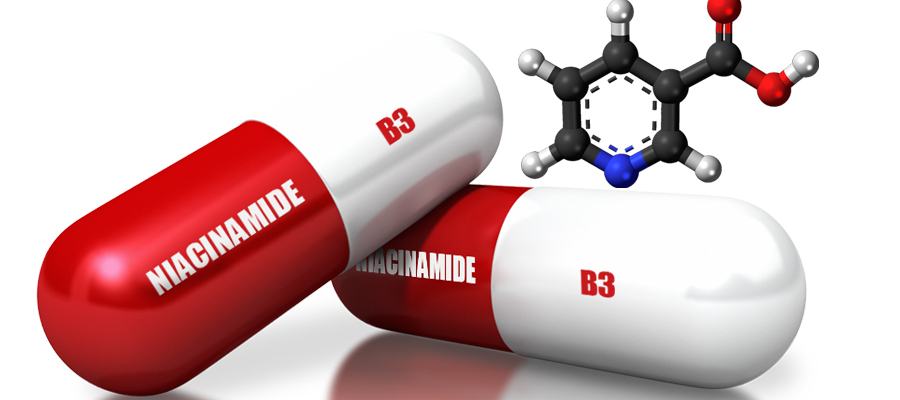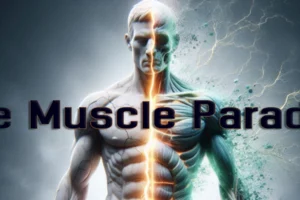Have You Heard What Niacinamide B3 Can Do?
Let’s talk about niacinamide or Vitamin B3. This fantastic little tool is something that we should all become familiar with and should probably all have in our natural medicine cabinet. This article isn’t about getting your recommended daily or what happens when you don’t. Instead, we will talk about how to use it to help battle some of your ailments. Before we get into the benefits, let’s clarify a few things.
What Is It?
To begin with, vitamin B3 is one of the essential 8 B vitamins. It’s also a water-soluble vitamin. That is important to know because it means that your body will not store it and will likely excrete any extra that your body doesn’t feel it needs.
B3 is an essential vitamin because every part of your body needs it to function correctly. B3 helps the body make various hormones in the adrenal glands, helps improve circulation, can improve cholesterol and triglyceride levels, and has also been shown to suppress inflammation in the body. It’s essential in creating the neurotransmitter serotonin.
It does a lot, and this shortlist merely covers a few of the many I thought you might be interested in.
Food Sources
Thankfully, most people get their recommended daily amount of B3 from their diet. Foods such as meat, poultry, redfish, milk, and coffee provide plenty to meet your daily requirements. That’s the good news.
More good news is that B3 deficiencies are relatively rare. Deficiencies usually only happen in places where food is scarce, if alcohol is being abused, or if anorexia is a problem. You might also find it interesting that your body can make small amounts of B3 from the amino acid tryptophan.
The 3 Types of B3
Vitamin B3 comes in several forms. You are probably familiar with the name niacin (also nicotinic acid). However, it also comes as niacinamide (also nicotinamide) and inositol hexanicotinate. This is important to understand because each one provides a unique twist and capability.
What B3 Can Do For You
This list is probably too long for one article. So for our purposes here, we will focus on niacinamide specifically. Niacinamide provides excellent bioavailability and can be used as an antipruritic (anti-itch), vasoactive (blood pressure-related), and photo-protectant (sun protectant), among others. It might even be able to help with lung damage caused by COVID-19. However, I want to focus on its antimicrobial and immune-enhancing capabilities.
That’s right! Vitamin B3 has some pretty incredible powers regarding some of the more significant ailments that get to us. Since it is not exactly common knowledge, I thought I would go ahead and share some of it with you. So here is a list of some of the fantastic things B3 can potentially do for you.
I’ll make each of these links so you can further your research and decide if B3 therapy might be right for you.
- High doses increased (by 1,000 times) the ability of immune cells to kill staph bacteria. – And here
- Nicotinamide has been shown to boost the immune system and substantially enhance the killing of important respiratory bacteria.
- Nicotinamide may be a potential new therapeutic agent to overcome persistent infections of Group A streptococcus.
- Nicotinamide-An Immune-Boosting Agent to Combat Antibiotic-Resistant Pathogens
- Nicotinamide has antimicrobial activity against a range of pathogens such as bacteria, parasite protozoa, fungi, and viruses
- It inhibits the growth of Mycobacterium tuberculosis, and human immunodeficiency virus (HIV).
- It has antifungal activities against Candida Albicans. – And here
- Treating Fungal Infections with Vitamin B3
- It might provide protection against bacteria on the skin, via the activation of antimicrobial peptides
- It works well for use on skin prone to acne.
- It can improve skin barrier function by increasing skin hydration.
- Topical Nicotinamide Improves Tissue Regeneration
- For skin, niacinamide may be preferable over clindamycin and other antibacterial agents
- Niacinamide is a popular alternative to oral or topical antibiotics for treating acne or rosacea
- It may reduce actinic keratoses and the risk of skin cancer, particularly squamous cell carcinoma.
- Niacin may help the immune system battle a deadly brain tumor
See what I mean? Of course, these studies just scratch the surface. The journals are filled with information going back many years. This amazing vitamin can do all of this and so much more. I’m merely providing these to help get you started.
Best of all, niacinamide is used both orally and topically. Significant benefits have been reported by doing both. However, therapeutic doses of niacinamide are far above the recommended 16mg daily dose, but studies demonstrate that such doses are usually safe under a certain limit.
UPDATE: Check out this great story of niacinamide being used to treat a severe staph infection. And I found a similar story here.
Dosage & Product Recommendations
Therapeutic dosages vary but are usually MUCH higher than the recommended daily. For dosage recommendations for various conditions, visit the following link: Niacin Dosage Recommendations by Drugs.com.
Here are a few cost-effective supplement options:
- Nutricost Niacinamide 500mg, 240 Capsules
- NusaPure Niacinamide 1000mg 200 Veggie Capsules
- Solaray Niacinamide Capsules, 500 mg, 100 Count
- Niacinamide B3 Face Moisturizer Serum
Nerdy Factoid
Niacinamide is an amide of vitamin B3. An amide is derived from carboxylic acids. Basically, it’s a functional group containing a carbonyl group linked to a nitrogen atom. This is important because it helps us understand that it can be functional in medicine and is a link between amino acids and proteins in our system.
Did you enjoy this article? You might also like my article titled “The N-acetyl Cysteine (NAC) Powerhouse.“
This article was written from a Health Science perspective. Dr. Robertson is a health researcher and educator, not a physician. The information provided here is not medical advice, a professional diagnosis, opinion, treatment, or service to you or any other individual. The information provided is for educational and anecdotal purposes only and is not a substitute for medical or professional care. You should not use the information in place of a visit, call consultation, or the advice of your physician or other healthcare providers. Dr. Robertson is not liable or responsible for any advice, course of treatment, diagnosis, or additional information, services, or product you obtain or utilize. IF YOU BELIEVE YOU HAVE A MEDICAL EMERGENCY, YOU SHOULD IMMEDIATELY CALL 911 OR YOUR PHYSICIAN.




